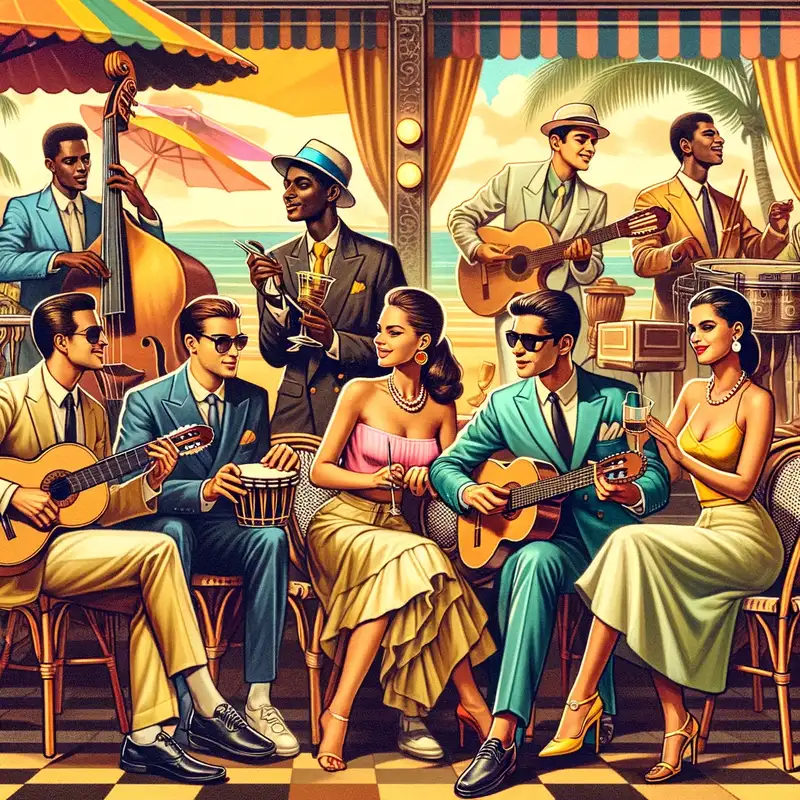Bossa Nova

Bossa Nova, translated as “new trend” or “new wave,” is an enchanting music and dance genre that emerged from Brazil in the late 1950s and early 1960s. This style is characterized by its fusion of samba rhythms and jazz harmonies.
With its lyrical themes often revolving around love, nature, and self-reflection, Bossa Nova captivated listeners around the globe.
Table of Contents
Origins and Historical Context
- Samba Roots: Bossa Nova originated from the traditional samba rhythms of Brazil but was performed without the typical orchestral accompaniment of samba, thus giving it a more intimate feel.
- Post-WWII Influences: The post-World War II era was a time of cultural exchange. Jazz, particularly cool jazz from North America, influenced Brazilian musicians, leading to an infusion of complex harmonies into their compositions.
- Rio de Janeiro: The movement originated in the beach neighborhoods of Rio, such as Copacabana and Ipanema. The beach culture and the laid-back atmosphere of these regions were instrumental in shaping the relaxed and reflective vibe of Bossa Nova.
Musical Characteristics
- Rhythm: While rooted in samba, Bossa Nova’s rhythm is more subdued and less percussive.
- Instrumentation: Acoustic guitar is central to Bossa Nova. Other instruments like piano, drums, and flute can also be part of the ensemble, but the arrangements tend to be sparse.
- Vocals: Bossa Nova vocals are often soft, understated, and intimate, with singers like João Gilberto often using a whispery singing style.
Key Figures
- João Gilberto: Often dubbed the “father of Bossa Nova,” Gilberto’s innovative guitar style and unique vocal approach were foundational to the genre.
- Antônio Carlos Jobim: A prolific composer and pianist, Jobim penned many of the genre’s classics, such as “The Girl from Ipanema” and “Corcovado.”
- Vinícius de Moraes: A poet, lyricist, and diplomat, Moraes collaborated with numerous musicians and played an integral role in shaping the lyrical landscape of Bossa Nova.
- Astrud Gilberto: With her iconic rendition of “The Girl from Ipanema,” Astrud brought Bossa Nova to international audiences and remains one of its most recognizable voices.
Global Impact and Legacy
- Bossa Nova and Jazz: American jazz musicians like Stan Getz popularized the genre in the U.S.
- Worldwide Appeal: By the mid-1960s, Bossa Nova had made its mark globally, influencing musicians across various genres and regions.
- Modern Iterations: Today, the legacy of Bossa Nova lives on in various music forms, from jazz to pop.